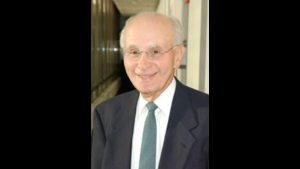‘Lighten Up’ weight loss challenge participants shed the pounds
Published February 20, 2013
It’s not your usual winter team sport. It attracts few spectators, and participants don’t aim to turn pro. But the third annual Lighten Up Challenge has enthusiastic teams and individual players who have their own definition of team spirit and personal best. And the rewards go far beyond a trophy or a gift card.
The Challenge, sponsored by the Jewish Community Center and the St. Louis Jewish Light, is in the fifth week of its eight-week session.
Thirty-eight teams of four people each are competing for bragging rights for losing the most weight, competing in percentages rather than pounds. So far, they have lost a collective 823.7 pounds through the first four weeks.
ADVERTISEMENT
Patrick McKee, Personal Training Manager at the JCC and co-leader of Lighten Up, said the number of participants is slightly lower this year, but those who signed up appear to be more motivated.
“Everyone is showing up each week (for weigh-ins),” McKee said. “We send out weekly emails with different fitness tips and motivational things so they don’t hit that rut. Last year, some people, if they hit a bad week, they threw in the towel.”
Sarah Conners, 28, who entered the challenge for the first time this year, felt close to quitting after a couple weeks because she saw no movement on the scale. But by the end of the third week, she was No. 44 on the “Top 100 Individuals” list, posting a weight loss of more than 3 percent.
ADVERTISEMENT
Initially, “I felt I was working really hard, but I wasn’t seeing that reflected,” Conners said. “I had a moment (after the second weigh-in) when I got really upset. But my husband encouraged me to keep working.”
After more successful weigh-ins, Conners said she felt “relieved,” but is now trying not to use that as an excuse to let up.
Conners said she entered Lighten Up because, “I was looking for a challenge, not just working out. I wanted to be driving towards a goal at a certain date. It’s a good way to keep motivated.”
Conners has not met her fellow team members. She signed up late and was assigned to a team of three other women. So far, the others have not responded to her e-mails about getting together. “It would be nice to have a team there,” she said. “But if I don’t, I’m at least supported at home. I don’t have to worry about my husband coming home and saying, ‘Let’s have fried chicken and pizza tonight.’”
Fred Valfer, on the other hand, says his team’s camaraderie has been his primary motivation for all three Lighten Up challenges he has undertaken. The members of Team Matheny – each team is named after a well-known Cardinals player – “do a lot of e-mail and texting back and forth,” he said. “We have some fun with this. We kid each other. It’s kind of over the edge.”
Would he give an example? “Not one word of it,” should be made public, he said, laughing.
Whatever Valfer and his teammates—Jeff Waldman, Doug Kolker and Rob Kilo—are saying to each other, it seems to be working. The team was in second place at the midpoint. Further, Valfer started the challenge this year at the same weight that he ended the challenge last year, with no backsliding.
He said he has changed his diet, eating more fruits and vegetables, more whole grain and less over-processed food. He works with a personal trainer and has learned exercises for more flexibility and core training. And the result? “The doctor is off my back,” he said with another laugh.
Valfer’s teammate, Waldman, is back for the third time because he found himself backsliding a bit. The public aspect of having his personal and team’s progress posted publicly is part of the incentive. “I’m not necessarily in it to win a competition,” he said, “even though the team I’m on is doing well and I’m happy to be doing my part. But a greater incentive for me is to begin the process of getting healthier, eating smarter and working out smarter.”
This year the program has added a new support feature—participants can opt for metabolic testing (at a charge) to find the best way to burn calories.
The testing measures a participant’s oxygen intake and carbon dioxide exhalation, breathing rate and heart rate as he or she works out, said McKee, the training director. He said the goal is for one’s body to work just hard enough to convert stored fat into blood sugar for energy—to “burn fat,”—but not hard enough to switch to burning blood sugar directly.
“Your brain and heart need blood sugar to operate properly,” McKee said. “If you work out too hard and you burn out blood sugar stores, you have to eat carbs to replace (the sugar) that the brain needs. We figure out that ideal workout for your body to burn the fat that you don’t need.”
Waldman said that before he was tested, he would do cardio exercise to strengthen his heart, sometimes jogging on a treadmill, “not too fast, but I considered it a good workout. After testing, I was informed that the best thing I could do was to walk on the treadmill at a fair pace, but gradually increase the incline setting. So now I have a rotation in order to get my heart rate in the most optimum range. For me, that’s what was determined to be the best.”
Waldman has changed his eating habits, cutting out desserts and “unnecessary breads,” and switching from a burger and fries to grilled chicken sandwich and coleslaw, for instance.
“The key is using this competition to really make changes in my personal lifestyle,” Waldman said. “Then maybe next year I won’t have to do this.”















